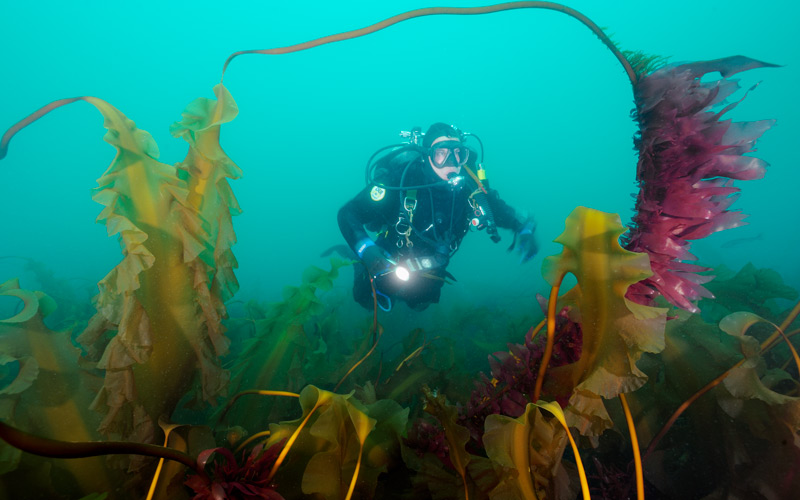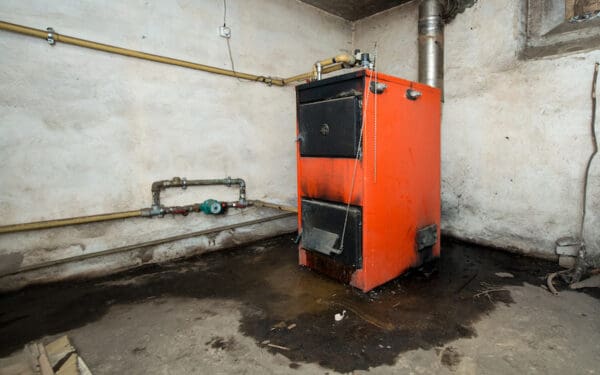
Our ocean is overheating – but we can help. From ditching dirty fossil fuels to protecting important marine areas, our actions can make a difference for our ocean's health. Photo: Brian Skerry.
This summer, New Englanders endured unprecedented heatwaves. Suffocating temperatures, soaring to over 100 degrees, hit our homes and families. Here on New Hampshire’s seacoast, my family and I had to come up with some creative ways to cool down, from backyard camping under the stars to hosting lemonade stands.
Yet, no activity beats our all-time favorite: a day at the ocean. Surfing, boogie boarding, seeing who can stay the longest in the cold water, and laughing as we jump over the glimmering ocean waves. But the reality is, climate change puts even these simple pleasures at risk – because New England’s ocean is overheating.
The ocean has given us so much – it’s time for us to help it cool down.
How Is the Ocean Overheating?
Over the last few decades, ocean temperatures worldwide have drastically increased. In New England, the Gulf of Maine is heating up faster than 96% of the global ocean. The main reason for this overheating? Our ocean is working overtime to protect us.
When harmful gas emissions – like carbon dioxide – build up in the atmosphere, they create a thick blanket of pollution around our planet, trapping heat inside. The ocean steps in to help. Since 1955, the ocean has absorbed more than 90% of Earth’s excess heat. But as we continue to spew these harmful emissions, the ocean can’t keep up with all that excess heat.
An overheating ocean spells bad news for marine life and humans. We already feel the impacts of rising seas, extreme weather events, and the collapse of important commercial fisheries. The health of our ocean is in crisis. We can help. Here’s how:
#1. Ditch Dirty Fossil Fuels
Earlier this year, we installed solar panels on our home. Our oldest daughter, 13-year-old Anneke, helpfully pointed out that the panels looked “ugly.” But those ugly panels soon became a symbol of pride for our family. She now thinks it’s really cool that we produce our own electricity while letting the Earth take a breath.
For too long, New Englanders have relied on burning dirty fossil fuels to power our homes. This has taken a toll on our communities and the environment – including our ocean. Clean, renewable energy sources like solar and offshore wind offer a long-term solution to meet our energy needs without sacrificing our health or economy. Transitioning to clean energy can also give the ocean a break from having to absorb all that excess heat and carbon pollution spewed by fossil fuel power.
In New England, CLF has helped to lead these efforts. Off Rhode Island’s coast, five wind turbines stand tall in the ocean – the first offshore wind farm in our nation. These ginormous pinwheels have harnessed the power of the ocean breeze. But to clean our energy grid, we need all hands on deck.
That means ditching dirty fossil fuels for good — and not just individually home by home. We must push our state and federal governments to support and fund the transition to clean renewable energies at the scale of cities, states, and ultimately, the whole country.
#2. Help Us Protect Special Ocean Places
“My mom works for the ocean,” my 8-year-old son Miles tells his friends. And I like to think that’s true. I work for the ocean, for the wildlife it hosts, and for the communities whose livelihoods rely on it.
I wanted to show my kids one of the ocean treasures that I work to protect. So, we visited the Mystic Aquarium’s special exhibit on the Northeast Canyons and Seamounts Marine National Monument.
My kids were fascinated by the whimsical and colorful creatures there. From acrobatic humpback whales to adorable dumbo octopuses, the Canyons and Seamounts provides refuge to myriad species – both common and rare. That’s why in 2016, President Obama designated it a Marine National Monument.
Safeguarding unique areas like the Canyons and Seamounts improves the ocean’s ability to absorb climate-damaging emissions from the atmosphere. That’s critical to help our ocean cool down and create resilience against the worst impacts of climate change.
To turn the tide on climate change, scientists are urging us to protect at least 30% of our ocean by 2030. Right now, barely 4.7% of the northern Atlantic is protected. Of that, only the Canyons and Seamounts ranks as highly protected, meaning it is off limits to almost all harmful commercial activities.
We need to push our representatives to do more to help our ocean.
You can help. Add your name to CLF’s petition to support permanent protections for Cashes Ledge and other important areas in New England’s ocean.
#3. Say No to Plastics
My younger daughter, 12-year-old Leia, enjoys scrolling through online videos that feature ocean wildlife. Lately, plastics have gained a lot of attention on social media platforms for harming marine mammals. But that plastic harms our environment even before it gets to the ocean.
Plastic is made of the same fossil fuels that harm our climate when burned. In 2019, the Center for International Environmental Law estimated that plastic production and incineration would add 850 million metric tons of climate-damaging to our atmosphere. Our ocean ends up absorbing a large percentage of these emissions.
We can help. By pushing our legislators to pass laws that reduce plastic pollution, we can stop it from ending up in our ocean and harming wildlife – and we’re limiting the emissions its manufacture and transport cause, too.
You Can Be Cool Too
Working for the ocean takes both individual action and collective work for systemic change. You can be a part of the solution. Ensuring a future where our kids can continue to enjoy the ocean – and our planet – depends on our ability to take collective action.
Learn more about CLF’s work to protect New England’s ocean and stay tuned for opportunities to engage in our advocacy efforts.



